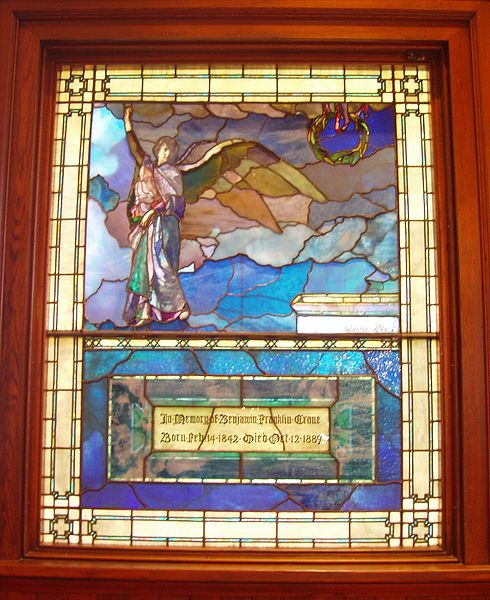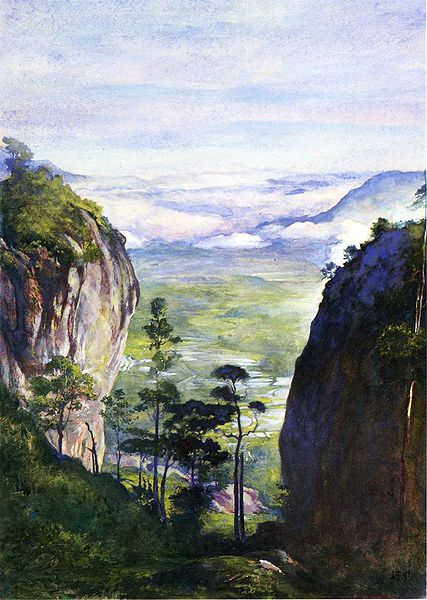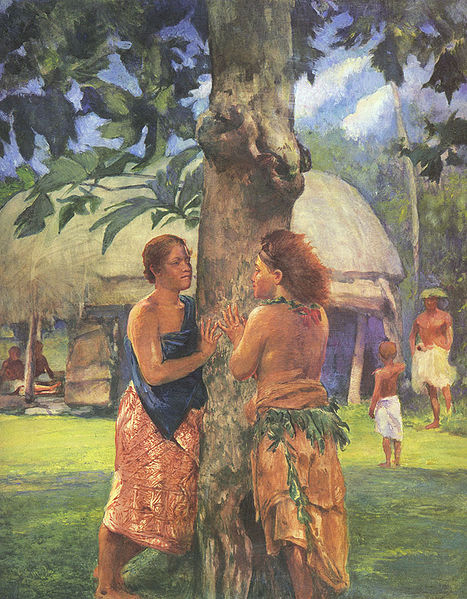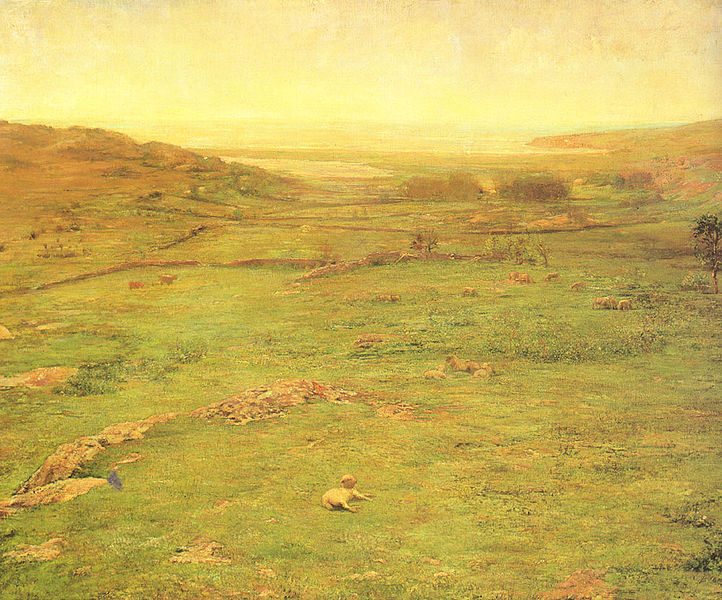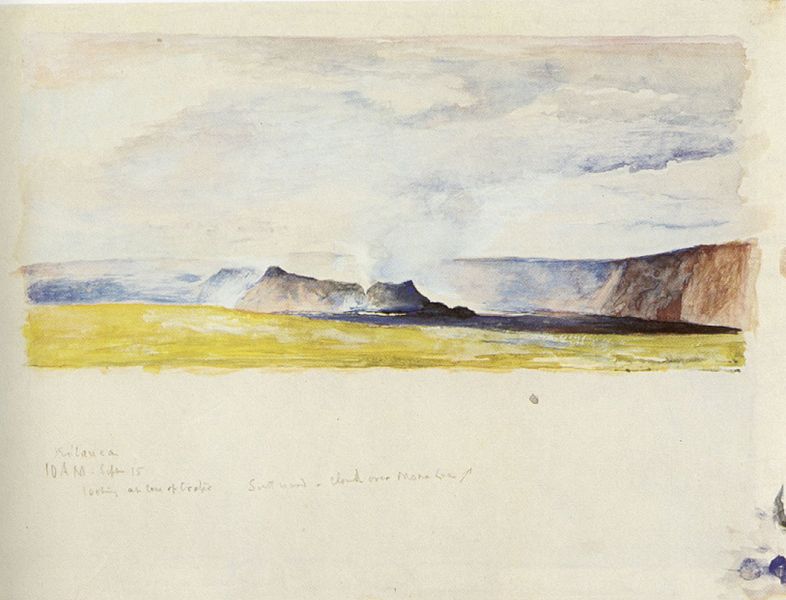<Back to Index>
- Mathematician Étienne Bézout, 1730
- Painter John La Farge, 1835
- Chancellor of Germany Chlodwig, Prince of Hohenlohe - Schillingsfürst, 1819
PAGE SPONSOR
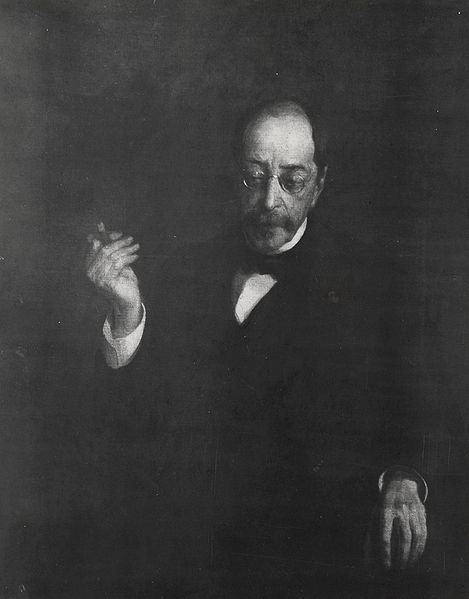
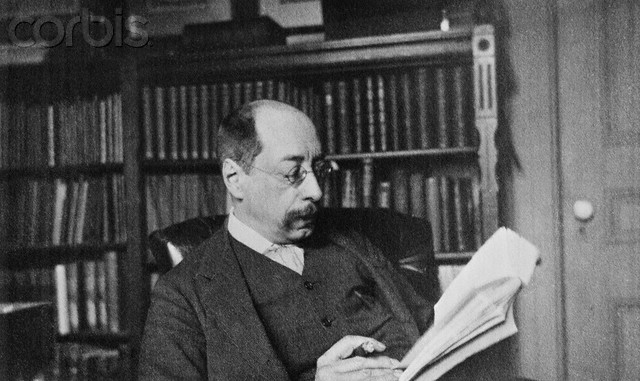
John La Farge (March 31, 1835 – November 14, 1910) was an American painter, muralist, stained glass window maker, decorator, and writer.
Born in New York City, New York, his interest in art began during his training at Mount St. Mary's University and St. John's College (now Fordham University). He had only the study of law in mind until he returned from his first visit to Paris, France, where he studied with Thomas Couture and became acquainted with famous literary people of the city. LaFarge subsequently studied with painter William Morris Hunt in Newport. Even LaFarge's earliest drawings and landscapes, done in Newport, Rhode Island, after his marriage in 1861 to Margaret Mason Perry, sister-in-law of Lilla Cabot Perry, show marked originality, especially in the handling of color values, and also the influence of Japanese art, in the study of which he was a pioneer.
Between 1859 and 1870, he illustrated Tennyson's Enoch Arden and Robert Browning's Men and Women. Breadth of observation and structural conception, and a vivid imagination and sense of color are shown by his mural decorations. His first work in mural painting was done in Trinity Church, Boston, in 1873. Then followed his decorations in the Church of the Ascension (the large altarpiece) and St. Paul's Chapel (Columbia University), New York. For the Minnesota State Capitol at St. Paul he executed, at age 71, four great lunettes representing the history of law, and for the Supreme Court building at Baltimore, a similar series with Justice as the theme. In addition there are his vast numbers of other paintings and water colors, notably those recording his extensive travels in the Orient and South Pacific.
His labors in almost every type of art won for him from the French Government the Cross of the Legion of Honor and membership in the principal artistic societies of America, as well as the presidency of the National Society of Mural Painters from 1899 through 1904. Enjoying an extraordinary knowledge of languages (ancient and modern), literature, and art, by his cultured personality and reflective conversation he influenced many other people. Though naturally a questioner he venerated the traditions of religious art, and preserved always his Catholic faith and reverence.
During 1904, he was one of the first seven artists chosen for membership in the American Academy of Arts and Letters. On his passing in 1910, John LaFarge was interred in the Green-Wood Cemetery in Brooklyn, New York. During his life, he maintained a studio at 51 West 10th Street, in Greenwich Village, which is now part of the site of Eugene Lang College.
La
Farge experimented with color problems, especially in the medium of
stained glass. He succeeded not only in rivaling the gorgeousness of
medieval windows, but in adding new resources by his invention of
opalescent glass and his original methods of superimposing and welding
his material. Among his many stained glass masterpieces are: four windows at the Trinity Church, Boston (1877 – 78); windows at the St. Paul's Chapel, Columbia University, NYC (1888 – 99); rose window at the First Unitarian Church of Philadelphia (1891); windows at Trinity Episcopal Church in Buffalo, NY (1886 – 89); windows at Biltmore Estate in Asheville, NC (1881); window of Edwin Booth as Hamlet at The Church of the Transfiguration in New York City (1898); windows in Mount Vernon Church, Boston, 1890s. He
married on October 15, 1860 at Newport, Rhode Island, Margaret Mason
Perry, who was born on February 26, 1839 in Newport, Rhode Island, and
died on May 2, 1925. Her father was Christopher Grant Perry, the son of Commodore Oliver Hazard Perry and Elizabeth Champlin Mason. He was a descendant of Gov. Thomas Prence (1599 - March 29, 1673) a co-founder of Eastham, Massachusetts,
a political leader in both the Plymouth and Massachusetts Bay colonies,
and governor of Plymouth (1634, 1638, and 1657 – 1673); and Elder William Brewster (pilgrim), (c. 1567 - April 10, 1644), the Pilgrim leader and spiritual elder of the Plymouth Colony and a passenger on the Mayflower. Her mother was Frances Sergeant, who was the daughter of Chief Justice Thomas Sergeant and Sarah Bache, the daughter of Sarah Franklin Bache and Richard Bache. She was a great-granddaughter of Benjamin Franklin, one of the Founding Fathers of the United States of America and Deborah Read. His eldest son, Christopher Grant LaFarge, was a partner in the New York based architectural firm of Heins & LaFarge, responsible for projects in Beaux-Arts style, notably the original Byzantine Cathedral of St. John the Divine, the Yale undergraduate society St. Anthony Hall (extant 1893 - 1913) pictured at, and the original Astor Court buildings of the Bronx Zoo. His
son Oliver Hazard Perry LaFarge I became an architect and real estate
developer. Part of his career in real estate was in a Seattle partnership with Marshall Latham Bond,
Bond & LaFarge. During the year 1897 to 1898 Seattle real estate
which had been extremely prosperous was in a "slump". The partners left
and participated in the Klondike Gold Rush. Among the camp fire mates
at Dawson City during the Fall of 1897 was Jack London who rented a
tent site from Marshall Bond. In Seattle the Perry Building designed
after LaFarge returned is still standing. Later on in life O.H.P.
LaFarge designed buildings for General Motors. Another of his sons, John LaFarge, S.J., became a Jesuit priest and a strong supporter of anti-racist policies.
LaFarge is honored together with Ralph Adams Cram and Richard Upjohn with a feast day on the liturgical calendar of the Episcopal Church (USA) on December 16.




